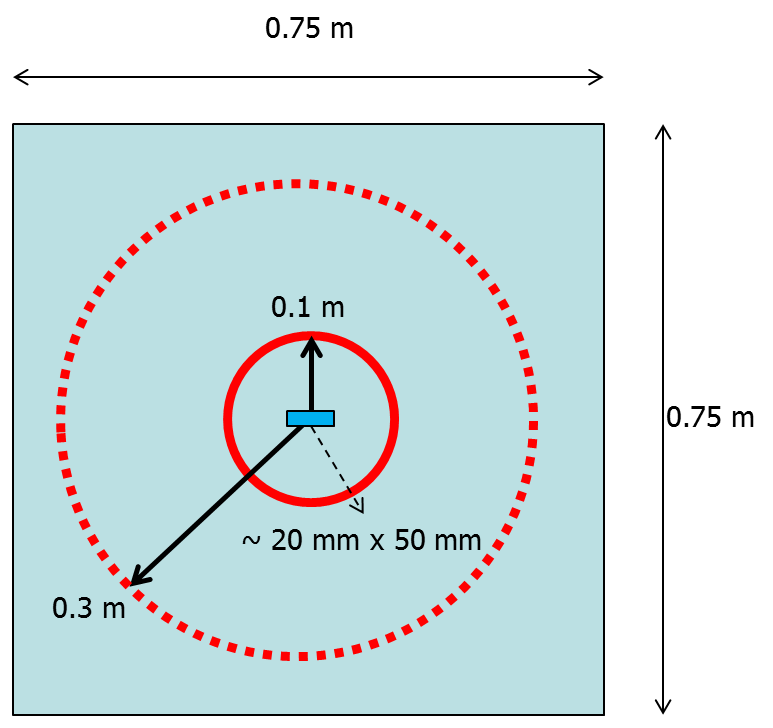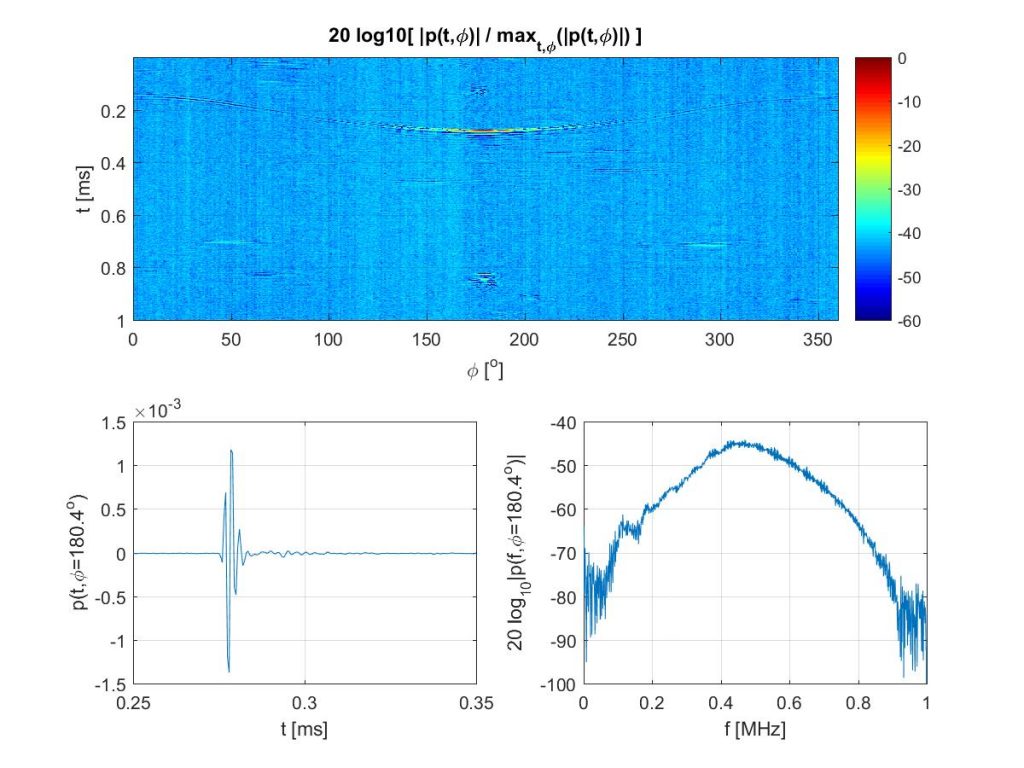2D Delft USCT
Access to provided data and code
The data set contains a circular scan of an agar based tissue mimicking phantom. The circular scan is made with two 0.5 MHz transducers (Panametrics V318). In total 45 source and 450 receiver locations are covered. In addition, an empty measurement for a single source position and 450 receiver locations is added.
The data and code can be accessed at https://surfdrive.surf.nl/files/index.php/s/UiT80Pb9NH8li0f
System description
The Delft Breast Ultrasound Scanner (DBUS) is depicted in Figure 1. The system contains of a water tank with dimensions 0.75 m x 0.75 m x 0.65 m with a water level of 0.45 m. The temperature of the water is continuously monitored via thermocouples and kept constant within 1oC using heating mats and a temperature controller. On top of the system, two rotary stages (LG Motion LGR1090-PD), controlled by motor drivers (Parker), are mounted. The first rotary stage rotates the object, the second the receiver (0.5 MHz, Panametrics V318). The source, which is identical to the receiver, is mounted at a fixed position in the corner of the tank. In this way a 2-D tomographic scan of the object is obtained. For each A-scan, an electric pulse with a center frequency of ~0.5 MHz is generated by an arbitrary wave form generator (Agilent 33250A), amplified (using Electronics and Innovation 210L 40 dB), and successively damped using a variable attenuator (JFW Industries, 50BR-036).

Figure 1: A sketch of the USCT system from the TU Delft; a water tank with a rotating object to emulate a rotating source at a radial distance of 0.3 m and a rotating receiver at a radial distance of 0.1 m. The object is a tissue mimicking agar phantom with dimensions of approximately 20 mm x 50 mm.
The resulting wave field is measured using an identical transducer connected to a 14 bit A/D converter (Spectrum M3i.4142-exp – PCI) which is set to a sample rate of 400 MHz. For each A-scan, in addition to the raw (unfiltered) RF data, information such as temperature, source and receiver positions, etc. is stored. Together with a scan including an object, a scan in absence of an object, referred to as an empty scan, is made for reference. An example of an empty scan is shown in Figure 2. The A-scan, presented in time and frequency domain, corresponds to a measurement with the source and receiver facing each other.

Figure 2: The RF data measured with the DBUS system in absence of an object; (top) the field measured as a function of time and receiver angle for single source position; (bottom-left and -right) a single A-scan in time and frequency domain.
License
The provided Delft USCT data is freely available dual licensed under the 3-clause BSD-license and the “Open Data Commons Attribution License”, requiering only acknowledgment/attribution.